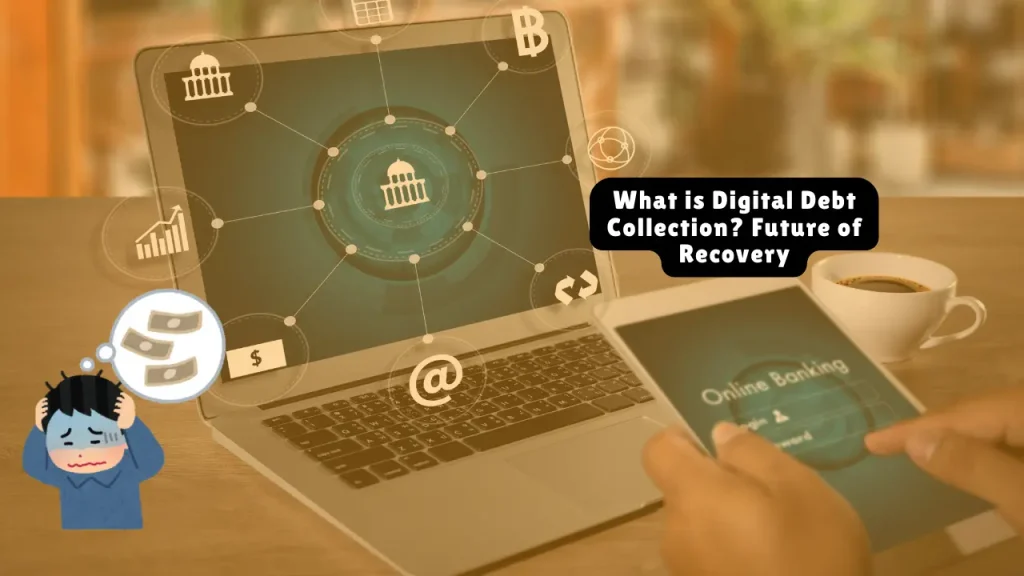What is Digital Debt Collection? Future of Recovery
Digital debt collection transforms the outdated process of letters and calls into a tech-powered, customer-first model driven by AI, automation, and omnichannel communication. With consumer debt levels rising and traditional methods losing effectiveness, businesses are turning to modern digital ecosystems to improve recovery rates, reduce costs, and maintain compliance.
Table of Contents
What Is Digital Debt Collection?
Digital debt collection uses digital channels—like SMS, email, chatbots, WhatsApp, and self-service portals—to communicate with debtors. These systems empower consumers to view account details, negotiate payment plans, or pay online at their convenience.
Unlike legacy methods, this model is:
- Customer-centric
- Data-driven
- Highly scalable
- Compliant with modern privacy and communication laws (FDCPA, GDPR)
Core Technologies and Features
| Feature | Function | Impact |
| Omnichannel Messaging | Email, SMS, web chat, WhatsApp | Maintains continuity across platforms |
| AI & Automation | Automates reminders, routes complex cases | Increases efficiency and personalization |
| Self-Service Portals | 24/7 account access, payment setup | 80% of users resolve debt without agent |
| Predictive Analytics | Forecasts repayment behavior | 42% boost in payment arrangements |
| Conversational AI | Handles queries, detects stress via NLP | 60% automation rate |
| Real-Time Insights | Tracks engagement metrics | Enables data-driven decisions |
| Compliance Tools | Built-in audit trails, encryption | Supports FDCPA, GDPR, ISO 27001 |
Integration capabilities are key. APIs sync systems like CRMs, payment gateways, and compliance modules. For example, Tratta’s platform supports IVR payments and multilingual outreach.
Related article: California’s New Debt Collection Laws
Why Digital Outperforms Traditional Methods
| Criteria | Traditional Collections | Digital Collections |
| Channels | Letters, calls, in-person | SMS, email, chat, portals |
| Speed | Delayed contact | Instant messaging |
| Personalization | One-size-fits-all | AI-driven targeting |
| Debtor Role | Passive recipient | Active self-service participant |
| Data Use | Limited metrics | Real-time behavioral analytics |
Performance Metrics:
- 7× higher engagement than calls
- 40%+ increase in repayment rates (McKinsey)
- 57% lower operational costs (Webio clients)
Related article: Can You Sue for Wrongful Debt Collection?

Legal and Ethical Compliance
Digital debt collection aligns with laws like FDCPA and GDPR, ensuring:
- Informed consent for communication
- Transparent messaging
- Secure, encrypted data handling
Built-in compliance features like audit trails, timestamps, and version tracking simplify regulatory reporting and reduce the risk of violations.
Catalysts Behind the Surge
- Demographic Shift: Gen Z and millennials demand digital-first experiences. Gen Z has 26% more credit card debt than millennials had at their age.
- Regulatory Pressure: FDCPA, GDPR, and evolving state laws require transparent audit trails.
- Pandemic Acceleration: COVID-19 forced remote debt management, boosting digital demand.
- AI Maturity: AI now personalizes outreach by analyzing behavior, predicting responses, and adjusting tone dynamically.
AI Is Driving the Revolution
| AI Tech | Application | Outcome |
| Reinforcement Learning | Finds best contact time/channel | 52% lift in repayment plans |
| Supervised Learning | Predicts default risk | 90% reach rate in 90 days |
| Conversational AI | Manages disputes, FAQs | 42% productivity increase |
| Sentiment Analysis | Detects emotional tone | Improves message tone on-the-fly |
| Generative AI | Writes personalized replies | Speeds up communication while staying compliant |
7. Navigating Challenges
Integration Barriers: Legacy systems lack API compatibility. Tools like flat-file transfers ease transitions.
User Behavior: Not all consumers are tech-savvy. Platforms like PAIR Finance segment users by digital literacy to tailor onboarding.
Jurisdictional Laws: Global collections must follow local standards. Solutions like PAIR Finance ONE offer cross-border compliance frameworks.
Where Digital Debt Collection Is Headed
- VoiceAI & Emotion Recognition: AI bots will soon handle voice calls, detect stress, and adjust tone.
- Open Banking: Real-time financial data will auto-adjust payment terms with user consent.
- Blockchain Integration: Immutable debt records will simplify disputes and legal audits.
- Predictive Vulnerability Scoring: AI will proactively flag financially fragile consumers before delinquency.
Final Thoughts
Digital debt collection is no longer optional—it’s essential. As U.S. consumer debt exceeds $17.94 trillion, businesses must adopt strategies that are empathetic, effective, and efficient. Companies like InDebted, Webio, and PAIR Finance prove that modern digital engagement results in higher recoveries, better compliance, and more satisfied consumers.
Firms that resist digital transformation risk becoming obsolete. Today’s consumer expects flexibility, transparency, and convenience. Meet them where they are—or lose them altogether.
Need help choosing the right platform, integrating AI ethically, or building compliance workflows? Let’s explore it together.
About the Author

Sarah Klein, JD, is a former consumer rights attorney who spent years helping clients with issues like unfair billing, product disputes, and debt collection practices. At All About Lawyer, she simplifies consumer protection laws so readers can defend their rights and resolve problems with confidence.
Read more about Sarah
